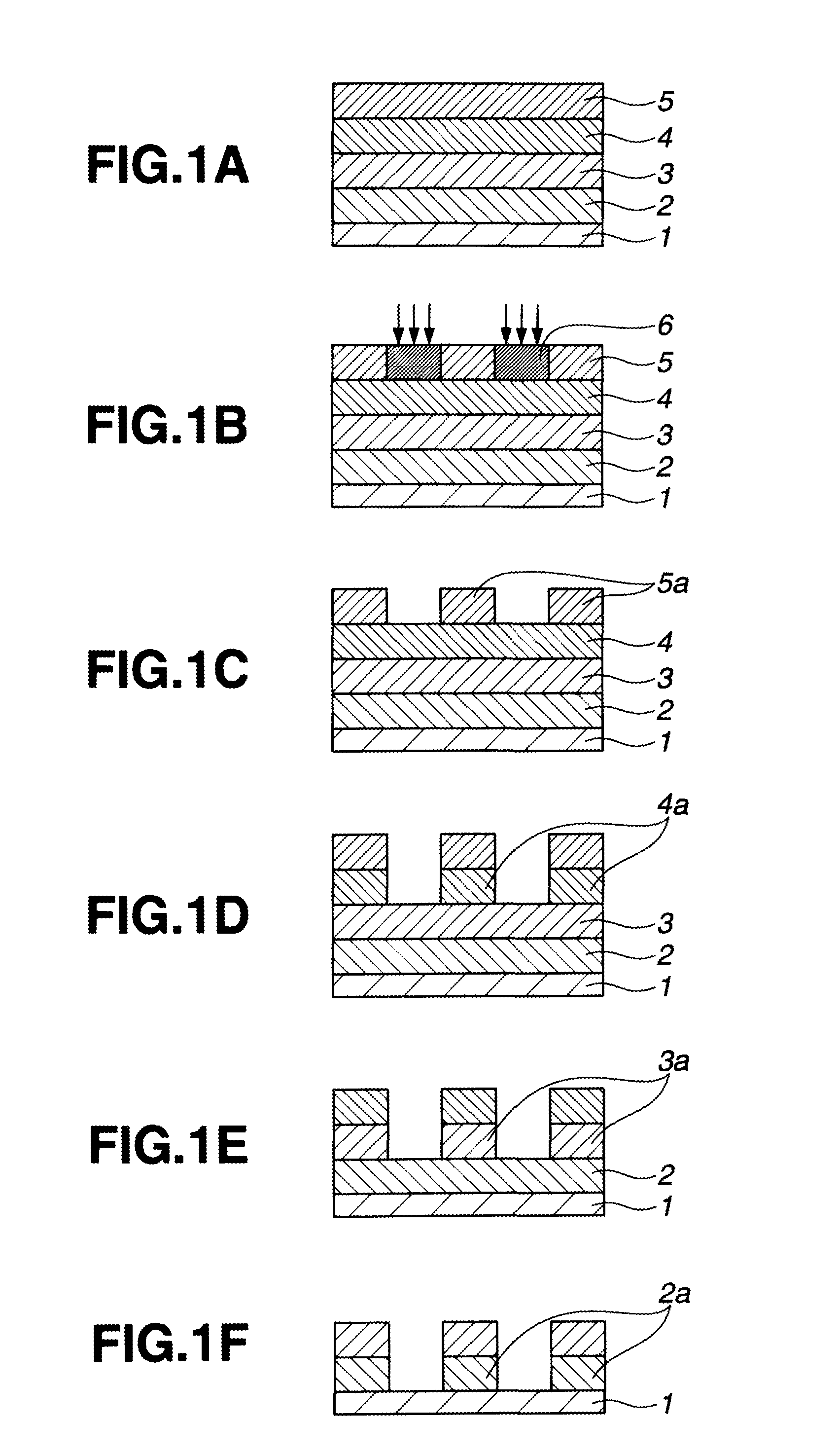Biphenyl derivative, resist bottom layer material, bottom layer forming method, and patterning process
a bottom layer and derivative technology, applied in the direction of photomechanical devices, instruments, polyether coatings, etc., can solve the problems of weak resistance of the acrylate to the substrate etching, the thickness of the resist bottom layer is too thick to utilize the optical interference effect, and the surface roughness after etching is increased to a serious concern level, etc., to achieve improved etching resistance, solvent resistance, and high heat resistance
- Summary
- Abstract
- Description
- Claims
- Application Information
AI Technical Summary
Benefits of technology
Problems solved by technology
Method used
Image
Examples
synthesis example 1
Synthesis of Biphenyl Derivative (9)
[0130]
[0131]In a nitrogen atmosphere, 26.4 g (1.09 mol) of magnesium was weighed and fed into a 5-L four-neck flask, to which a portion of a solution of 168 g (0.54 mol) of 4,4′-dibromobiphenyl and 23.0 g (0.54 mol) of lithium chloride in 1,000 ml of dry THF was added until the magnesium was immersed therein. An amount of dibromoethane was added whereupon reaction started. The remaining portion of the THF solution was added dropwise over 3 hours while maintaining the exothermic reaction. At the end of dropwise addition, 500 ml of THF was added to the reaction solution, which was ripened for 8 hours under reflux to form a Grignard reagent. The flask was cooled to an internal temperature of 55° C., whereupon a solution of 150 g (0.83 mol) of 9-fluorenone in 400 ml of dry THF was added dropwise over 2 hours. At the end of dropwise addition, the solution was ripened for 5.5 hours under reflux. The flask was cooled in an ice bath, whereupon 1,000 ml of...
synthesis example 2
Synthesis of Biphenyl Derivative (10)
[0135]
[0136]Into a 1-L three-neck flask, 40.3 g (78.4 mmol) of biphenyl derivative (9), 23.73 g (164.6 mmol) of 2-naphthol, and 240 ml of 1,2-dichloroethane were weighed and fed. With stirring in an oil bath at 30° C., 7.3 ml of methanesulfonic acid was slowly added dropwise. At the end of dropwise addition, the temperature of the oil bath was elevated to 50° C., at which reaction run for 6 hours. The reaction solution was allowed to cool down to room temperature, diluted with 500 ml of MIBK, filtered to remove the insoluble matter, and transferred to a separatory funnel. Separatory washing with 300 ml of ultrapure water was repeated 9 times. The organic layer was concentrated in vacuum. The residue was dissolved in 800 ml of THF and poured into 2,500 ml of hexane for crystallization. The crystal was filtered and dried, obtaining 51.6 g (yield 85.8%) of biphenyl derivative (10)
Biphenyl Derivative (10):
[0137]IR (KBr): ν=3528, 3389, 3059, 3030, 163...
synthesis example 3
Synthesis of Biphenyl Derivative (11)
[0143]
[0144]Into a 200-ml three-neck flask, 10.0 g (19.0 mmol) of biphenyl derivative (9), 3.66 g (39.0 mmol) of phenol, and 60 ml of 1,2-dichloroethane were weighed and fed. With stirring in a water bath, 2.4 ml of methanesulfonic acid was slowly added dropwise. At the end of dropwise addition, the temperature of an oil bath was elevated to 50° C., at which reaction run for 2 hours. The reaction solution was allowed to cool down to room temperature, diluted with 150 ml of MIBK, filtered to remove the insoluble matter, and transferred to a separatory funnel. Separatory washing with 100 ml of ultrapure water was repeated 4 times. The organic layer was concentrated in vacuum. The residue was dissolved in 28.8 g of THF and poured into 900 ml of hexane for crystallization. The crystal was filtered and dried, obtaining 8.3 g (yield 65.5%) of biphenyl derivative (11).
Biphenyl Derivative (11):
[0145]IR (KBr): ν=3501, 3371, 3031, 1693, 1604, 1594, 1508, 1...
PUM
| Property | Measurement | Unit |
|---|---|---|
| temperature | aaaaa | aaaaa |
| wavelength | aaaaa | aaaaa |
| size | aaaaa | aaaaa |
Abstract
Description
Claims
Application Information
 Login to View More
Login to View More - R&D
- Intellectual Property
- Life Sciences
- Materials
- Tech Scout
- Unparalleled Data Quality
- Higher Quality Content
- 60% Fewer Hallucinations
Browse by: Latest US Patents, China's latest patents, Technical Efficacy Thesaurus, Application Domain, Technology Topic, Popular Technical Reports.
© 2025 PatSnap. All rights reserved.Legal|Privacy policy|Modern Slavery Act Transparency Statement|Sitemap|About US| Contact US: help@patsnap.com



